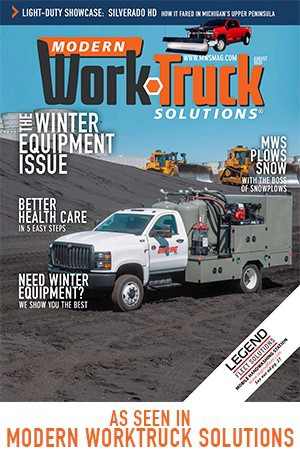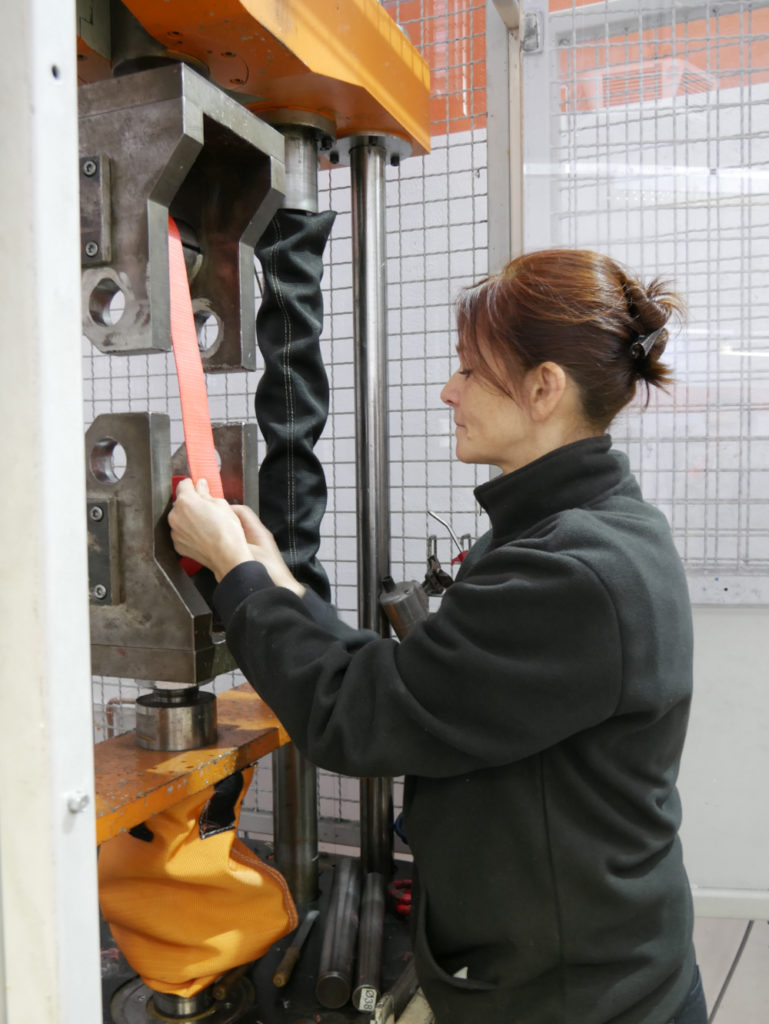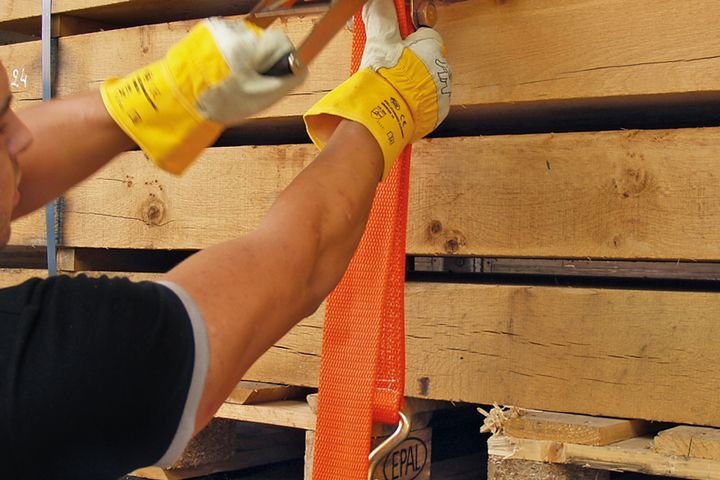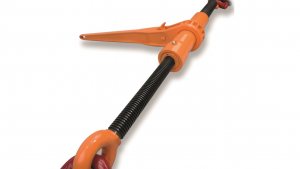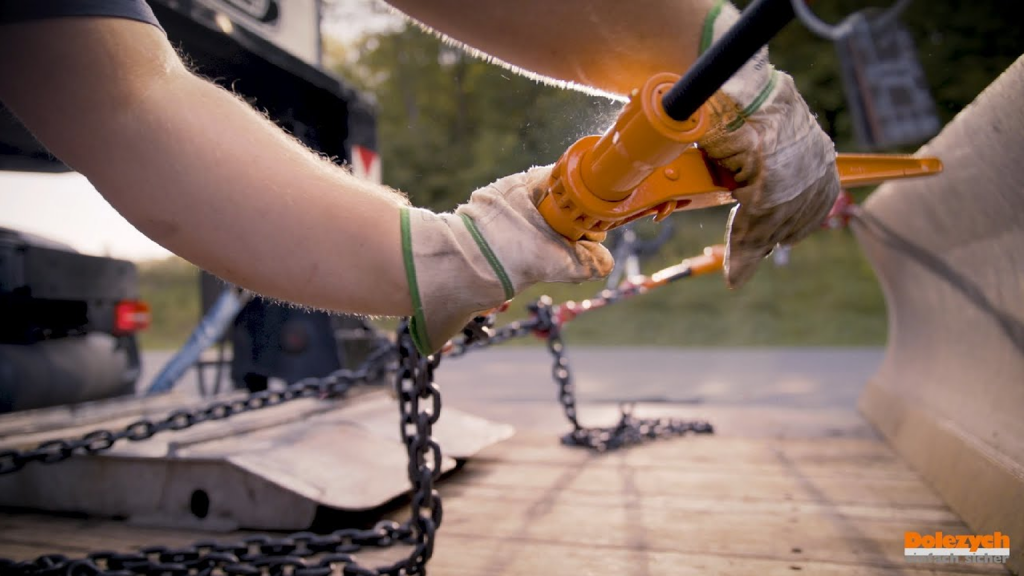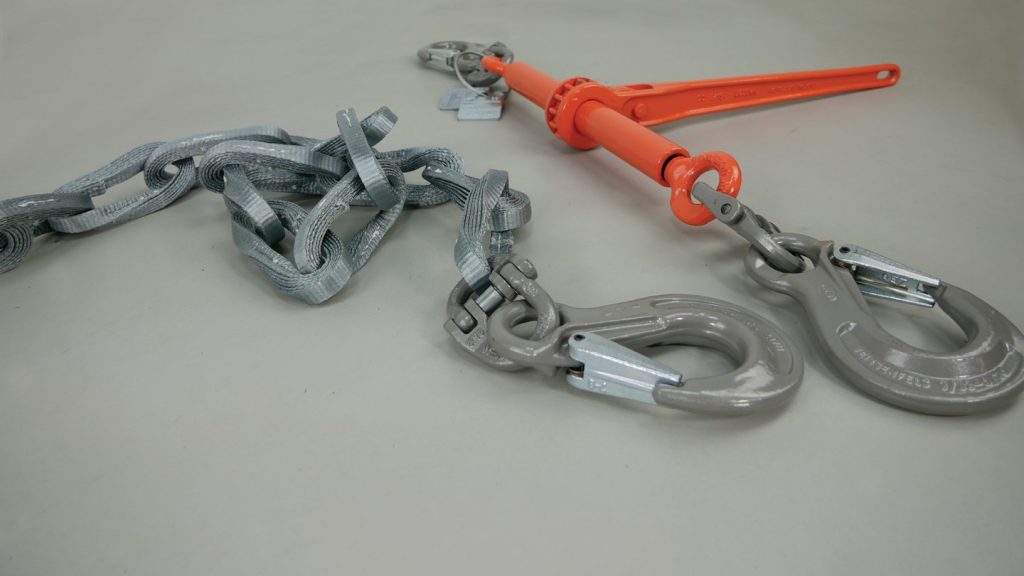Exclusive cooperation in the name of safety
BPW iGurt with Dolezych lashing strap available now
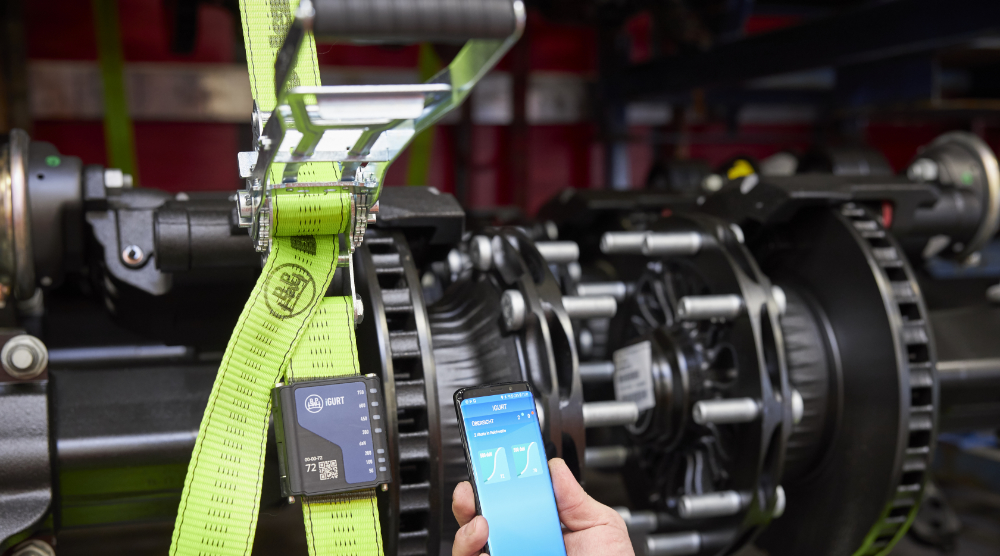
How much they have to tighten their lashing straps in order to secure the load sufficiently is often estimated by many users on the basis of their feeling, sense of proportion and, in some cases, years of experience. However, this approach is often inadequate. Too little pretensioning force in the lashing equipment (slipping load) or a too tight lashing can often result in costly and dangerous damage to the goods being transported or the load itself.
In order to give the user more security in this respect, Dolezych has for many years offered products that can indicate the pretensioning force achieved in each case, e.g. mobile pretensioning force measuring devices from the Dolezych “DoMess” product range.
Intelligent cargo restraint
For the same reasons, BPW Bergische Achsen KG has developed the iGurt, which has already won the Golden German Innovation Award in the category “Excellence in Business to Business – Automotive Technologies” of the German Design Council in May 2019. The iGurt is an intelligent pretensioning force indicator that continuously monitors the pretensioning force on the lashing strap via app.
Common configuration
To ensure that the iGurt indicator functions optimally, it is matched to a special Dolezych lashing strap. The final combination of iGurt and lashing strap was thus created through cooperation between the two German quality manufacturers BPW and Dolezych Germany. “Together, the entire system was developed and configured. The iGurt is now available exclusively with Dolezych lashing straps,” reports Uwe Schöbel, head of the Dolezych Germany technical department.
Cargo restraint continuously in view
The functionality of the handy and robust pretensioning force indicator is delightfully simple. It is easily and quickly attached to the lashing strap by means of a clip mechanism. Already during tensioning, the iGurt shows in 50 daN increments the indication value of the measured pretensioning forces. If the pretensioning force falls below its previously set minimum value, e.g. while driving, the user is minimum value, the user – this can be the driver, but also a forwarder – is informed of this via a message in his smartphone app (Android) about this. The user can correct the cargo restraint on the lashing strap in question. “So he doesn’t have to check each lashing strap individually to find out where the loss occurred. This saves time and he can quickly continue the journey safely,” explains Sales Manager Walter Eckstein one of the main benefits of the safety system.
Transparency, less damage, lower costs
The advantages are obvious: more transparency and reduced downtimes, a verifiable loading control as well as fewer accidents and damage due to inadequately secured or cargo that has been tied down too tightly. This also results in less effort for claims processing in the company. “So the iGurt will play its contribute to the protection of people and loads in road traffic. It will also help to save considerable costs,” says Walter Eckstein. The product innovation, which is eligible for funding under the “De-minimis program” of the German government, is available now exclusively in the BPW store telematics24.de and in the Dolezych Germany online store (shipping to Germany and Austria).

